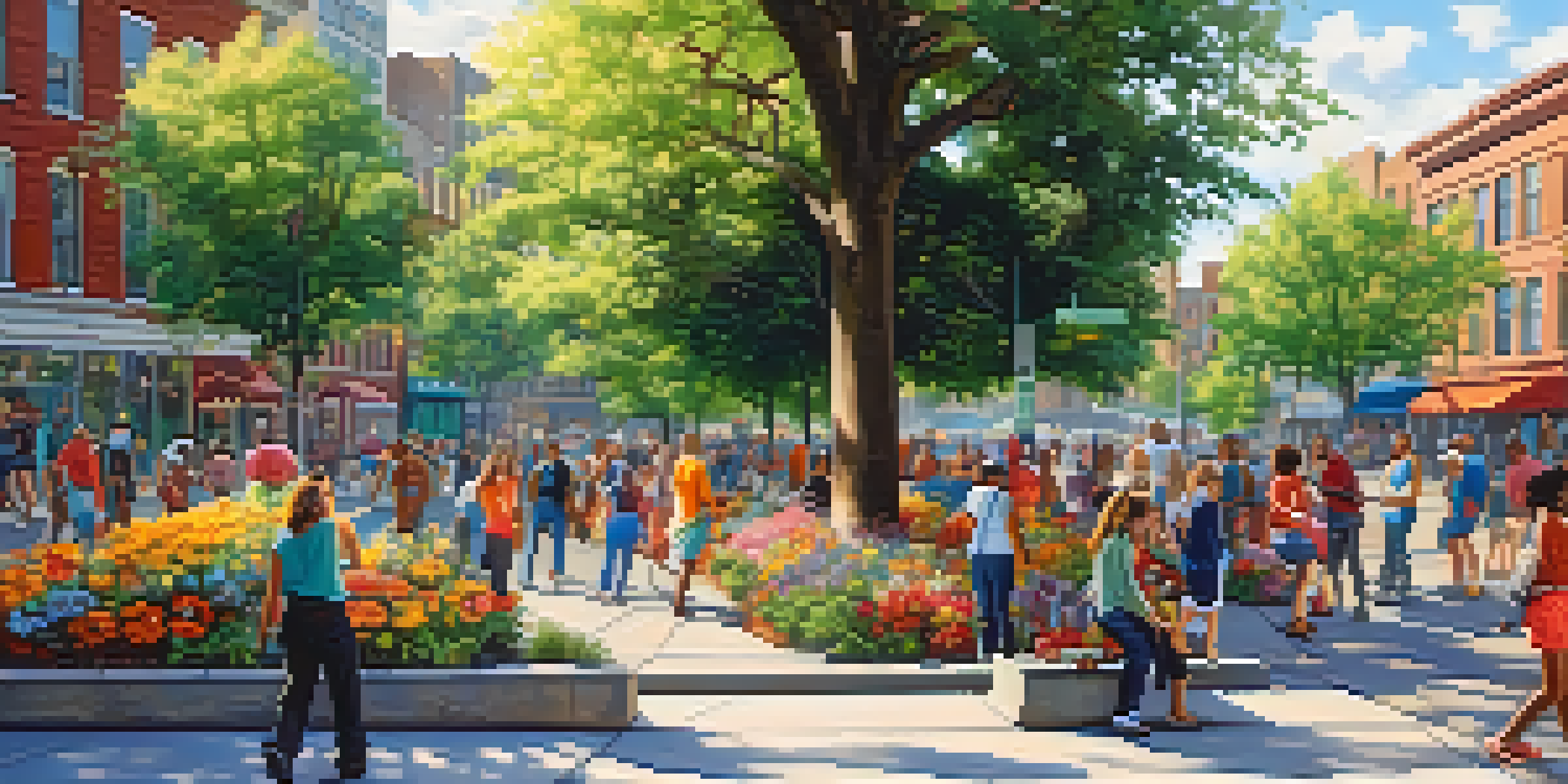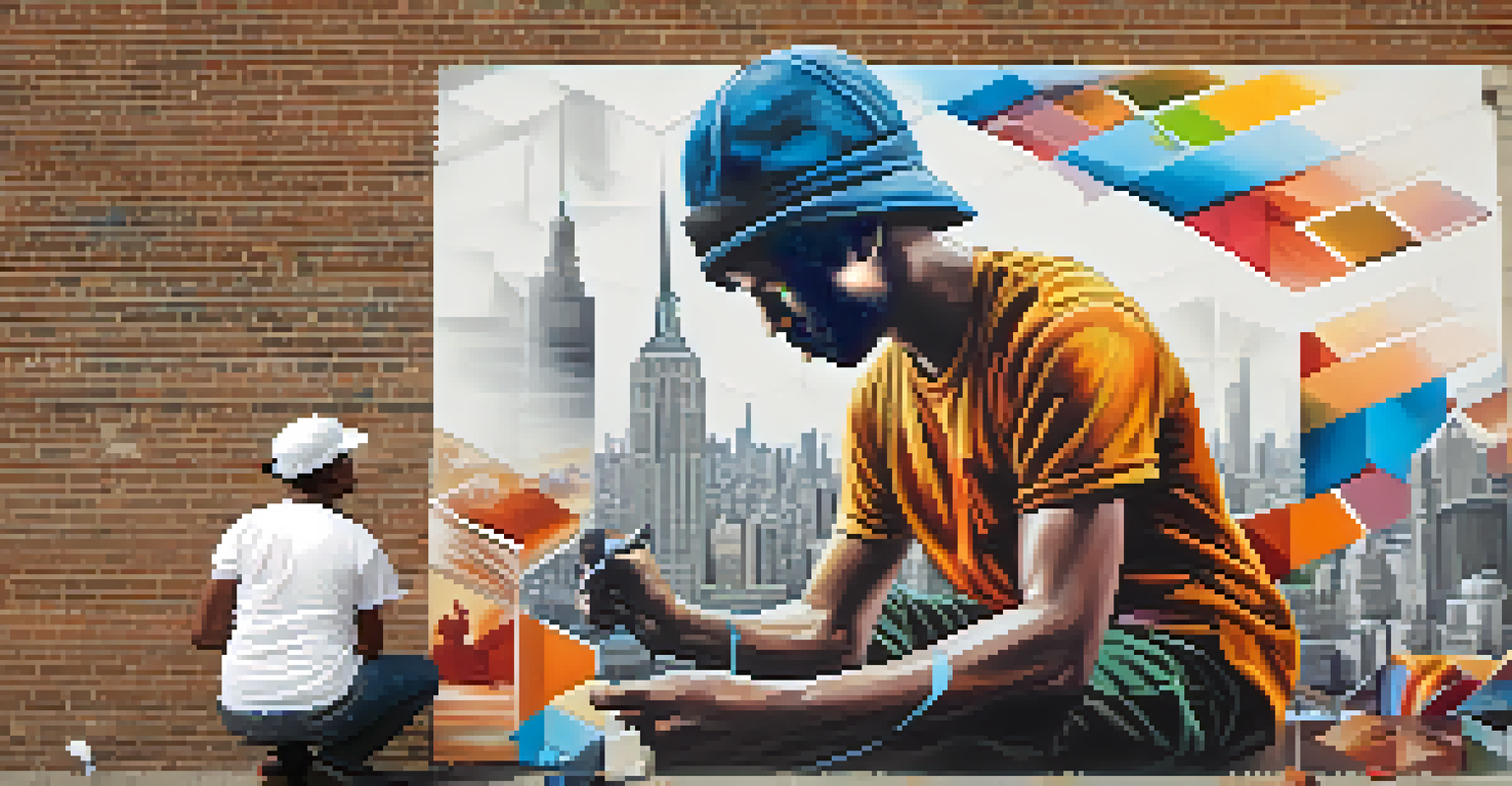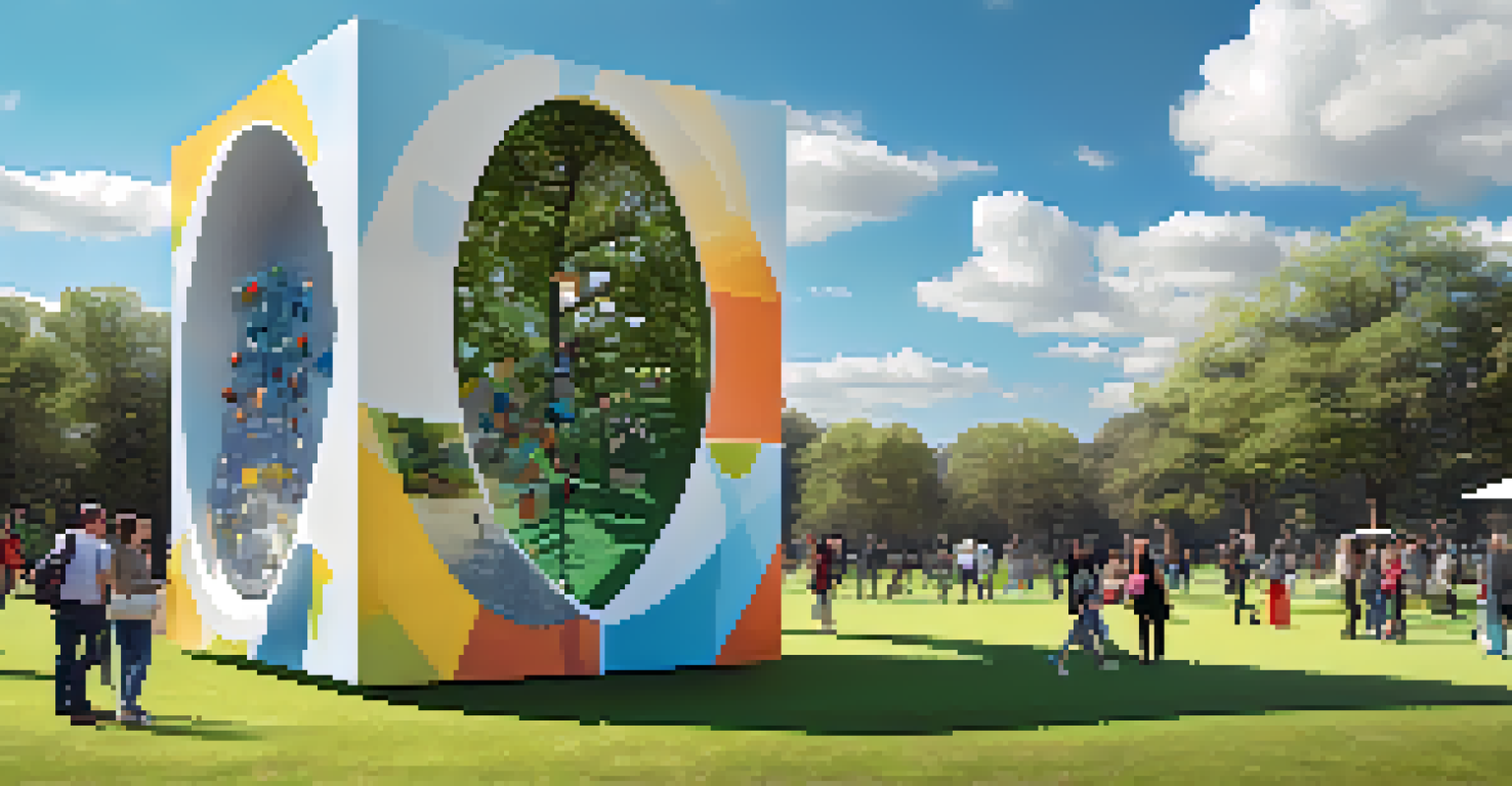The Evolution of Contemporary Art in the Urban Landscape

Defining Contemporary Art in Urban Settings
Contemporary art refers to artworks produced in the late 20th and early 21st centuries, often reflecting modern society's complexities. Urban settings, with their dynamic nature, serve as a canvas for these artistic expressions, showcasing themes that resonate with city life. The interplay between art and the urban environment creates a unique dialogue, allowing artists to comment on social issues, culture, and identity.
Art is the most beautiful of all lies.
For example, street art has emerged as a popular form of contemporary art, transforming mundane walls into vibrant narratives. Artists like Banksy use the urban landscape to provoke thought and inspire conversations about political and social issues. This evolving relationship emphasizes how art can shape and be shaped by the environment it occupies.
As we delve deeper into this topic, it’s crucial to recognize that the definition of contemporary art is not static; it evolves as society changes. This makes it an exciting field to explore, especially within the context of urban landscapes, where art continually adapts and responds to its surroundings.
Historical Context of Urban Contemporary Art
To understand the evolution of contemporary art in urban landscapes, we must first look at its historical roots. The late 19th and early 20th centuries marked significant shifts in artistic movements, with urbanization leading to new forms of artistic expression. Movements like Impressionism and later Dadaism began to reflect the changing dynamics of urban life, paving the way for contemporary artists.

The rise of graffiti and street art in the 1980s is a pivotal moment in this evolution. Artists began to reclaim public spaces, using them as platforms to express personal and political messages. This era marked a departure from traditional gallery settings, bringing art directly to the people and challenging the conventional notions of who can be an artist.
Urban Art Reflects Modern Society
Contemporary art in urban settings serves as a vibrant canvas for artists to comment on social issues, culture, and identity.
As cities continued to grow and diversify, so did the themes explored in contemporary urban art. Issues such as gentrification, community identity, and social justice became prominent, showcasing how artists respond to the rapid changes occurring in their environments.
The Role of Technology in Urban Art Evolution
Technology has played a significant role in shaping contemporary urban art, making it more accessible and interactive. Digital tools allow artists to experiment with new mediums, such as projection mapping and augmented reality, creating immersive experiences that engage viewers in ways traditional art cannot. This technological shift has not only expanded the scope of urban art but also its audience.
Creativity takes courage.
Social media platforms have further transformed how urban art reaches the public. Artists can share their work instantly, garnering attention and feedback from a global audience. This interconnectedness has fostered a sense of community among artists and art lovers, encouraging collaboration and innovation.
Moreover, technology has enabled the documentation and preservation of urban art. As street art is often ephemeral, capturing it digitally ensures that these works can be appreciated long after they’ve faded from their physical locations. This blend of art and technology continues to redefine contemporary urban landscapes.
Community Engagement Through Urban Art
Contemporary art in urban settings often serves as a catalyst for community engagement and dialogue. Public art projects, like murals and installations, invite local residents to participate in the creative process, fostering a sense of ownership and pride in their neighborhoods. Artists frequently collaborate with community members to reflect their stories and experiences, making art a collective expression.
For instance, initiatives like 'Art in the Streets' have revitalized neglected areas by transforming them into vibrant hubs of creativity. These projects not only beautify the urban landscape but also encourage social interactions among residents, breaking down barriers and uniting diverse communities.
Community Engagement Through Art
Public art projects foster community involvement, allowing local residents to participate in the creative process and reflect their stories.
By involving communities in the artistic process, urban art becomes a powerful tool for social change. It raises awareness of local issues and amplifies marginalized voices, ensuring that contemporary art remains relevant and resonant within the urban fabric.
The Globalization of Urban Contemporary Art
Globalization has significantly influenced the evolution of contemporary art in urban landscapes, enabling the exchange of ideas and styles across cultures. Artists from different parts of the world draw inspiration from one another, blending traditional practices with modern techniques to create unique works that reflect a diverse global narrative. This cross-cultural interaction enriches the urban art scene, making it a melting pot of creativity.
Consider the impact of international art festivals, like the Venice Biennale or Art Basel, which showcase urban artists alongside established figures. These platforms provide visibility to emerging talents, allowing them to share their perspectives on global issues through their art. As a result, the urban landscape becomes a stage for a multitude of voices and experiences.
However, this globalization also raises questions about cultural appropriation and authenticity. It’s essential for artists and audiences to navigate these complexities thoughtfully, ensuring that the richness of diverse cultures is celebrated rather than exploited in the contemporary art landscape.
Challenges Facing Urban Contemporary Artists
While urban contemporary art flourishes, artists face numerous challenges that can hinder their work. One major issue is the struggle for funding and resources. Many artists rely on grants or community support to bring their visions to life, which can be difficult to secure in an increasingly competitive landscape. This financial strain often limits the scope and scale of their projects.
Additionally, urban artists frequently grapple with issues of legality and censorship. Creating art in public spaces can lead to conflicts with local authorities, especially when the work challenges societal norms or critiques political issues. This tension can stifle creativity, forcing artists to navigate a fine line between expression and compliance.
Global Influences Shape Urban Art
Globalization has enriched urban contemporary art by facilitating the exchange of diverse cultural ideas and styles among artists worldwide.
Despite these hurdles, many urban contemporary artists continue to push boundaries, finding innovative ways to fund their projects and engage with their communities. Their resilience and commitment to their art not only enrich the urban landscape but also inspire future generations of artists.
The Future of Contemporary Art in Urban Environments
As we look ahead, the future of contemporary art in urban environments appears both promising and dynamic. With the ongoing advancements in technology and the ever-changing social landscape, artists have more tools and platforms than ever to express their creativity. This evolution suggests that urban art will continue to adapt and thrive, reflecting the complexities of modern life.
Emerging trends, such as sustainability and eco-consciousness, are likely to shape the themes and practices of future urban artists. Many are beginning to incorporate recycled materials and environmentally friendly techniques into their work, highlighting the importance of sustainability in art. This shift not only benefits the planet but also encourages a deeper connection between art and its environment.

Ultimately, the future of contemporary art in urban landscapes will depend on the ongoing dialogue between artists, communities, and the spaces they inhabit. As this conversation evolves, we can expect to see even more innovative and meaningful works that challenge perceptions and inspire change.